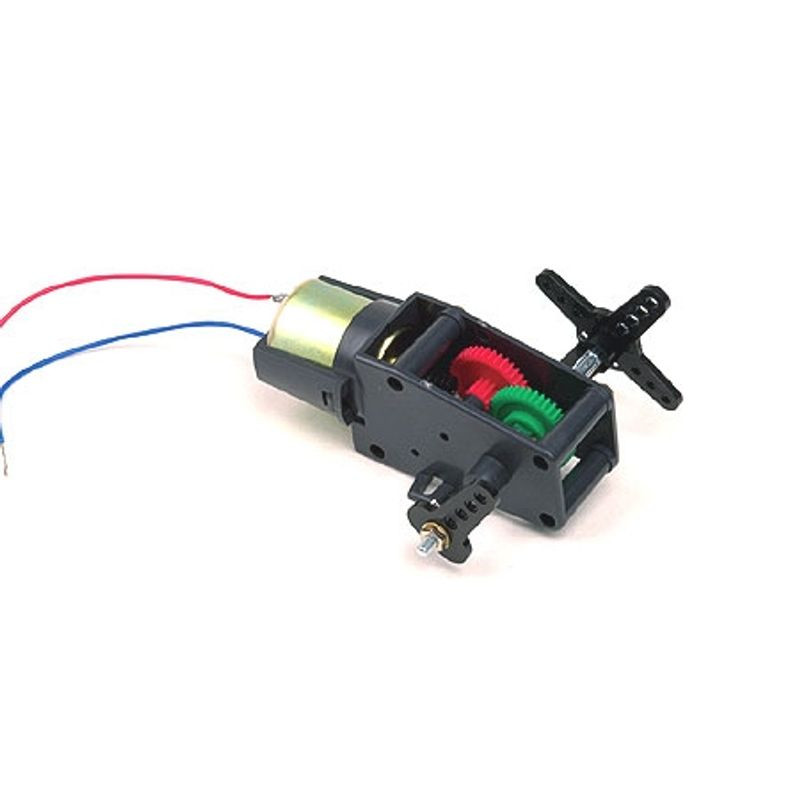


location_on 4131 Fraser St. Vancouver BC Get Directions
phone 604-875-1993 Call us
access_time Hours
| Monday - Friday | 9AM - 5:30PM |
| Saturday - Sunday & Holidays | Closed | See Holiday Hours |








The primary feature of the Tamiya 72004 Worm Gearbox from Tamiya’s high-efficiency series is a worm gear, which locks the output shaft whenever the motor isn’t turning. The high gear ratios of 216:1 or 336:1 make this gearbox appropriate for small walking robots, lifting mechanisms, and other applications where high torque is desired.
The low-voltage motors in the worm gearbox run on 1.5-4.5 volts and draw up to a few amps, making them perfect candidates for the Pololu low-voltage dual serial motor controller and the DRV8833 motor driver carrier (2130-POLOLU). Motor overheating can be caused by excessive stalling, even at very low voltages. We recommend that you use stall-detection sensors, or just watch your robot, to make sure that it doesn’t stall for more than a few seconds at a time.
This gearbox has a 4 mm diameter, round output shaft, which works with the wheels that are compatible with Tamiya 4 mm, round shafts. Our 3 mm universal mounting hub also fits on the smaller threaded end of the shaft, although it is not specifically intended to work with this type of shaft (the hub’s set screw could damage the thread on the shaft).
Note: The worm gearbox is a kit; assembly is required. To use the kit in robotics projects, you need to connect the motors to your own robot controller.
General specifications
| Typical operating voltage: | 3 V |
|---|---|
| Gear ratio options: | 216, 336 :1 |
| Free-run motor shaft speed @ 3V: | 9400 rpm |
| Free-run current @ 3V: | 150 mA |
| Stall current @ 3V: | 2700 mA |
| Motor shaft stall torque @ 3V: | 0.97 oz·in |
Notes:
